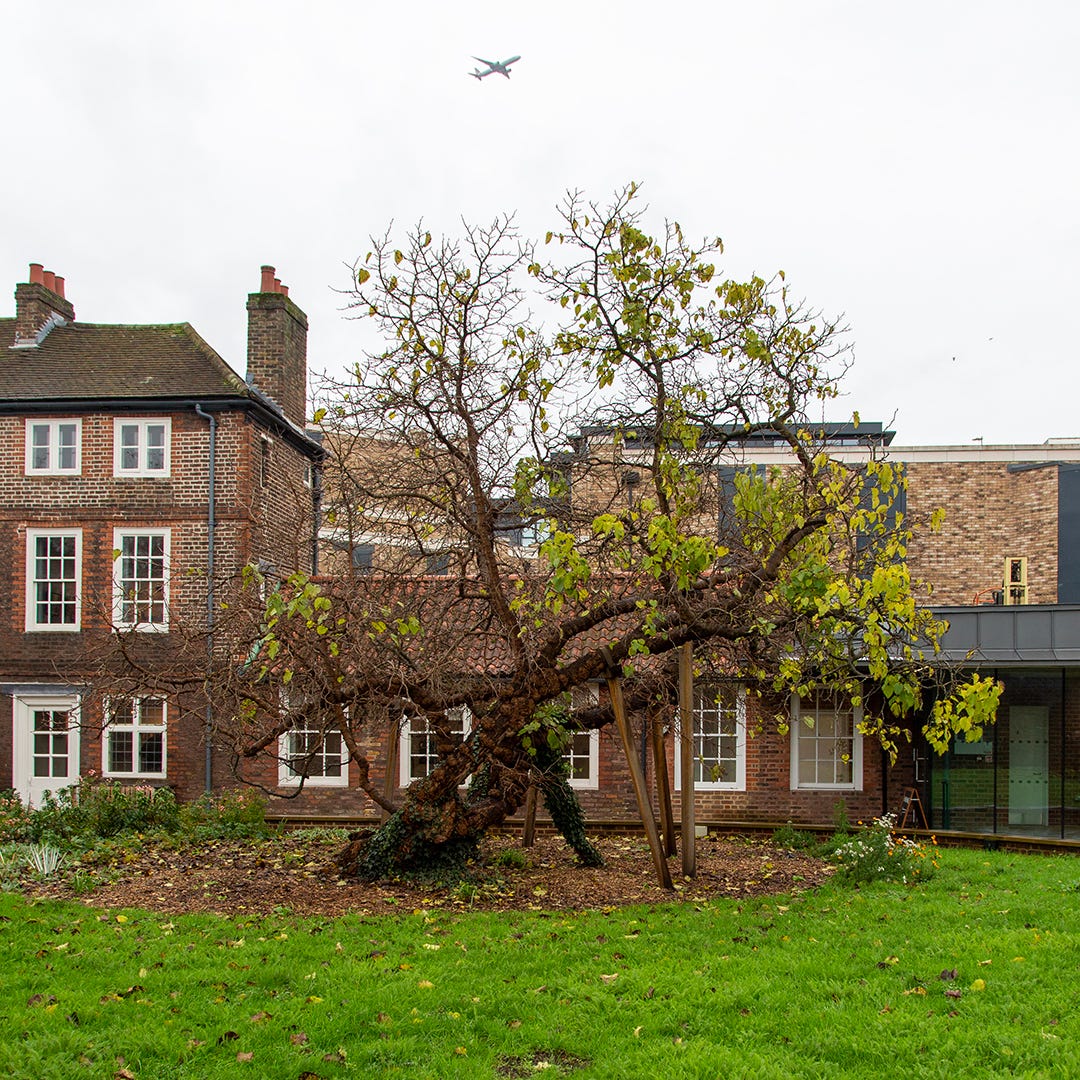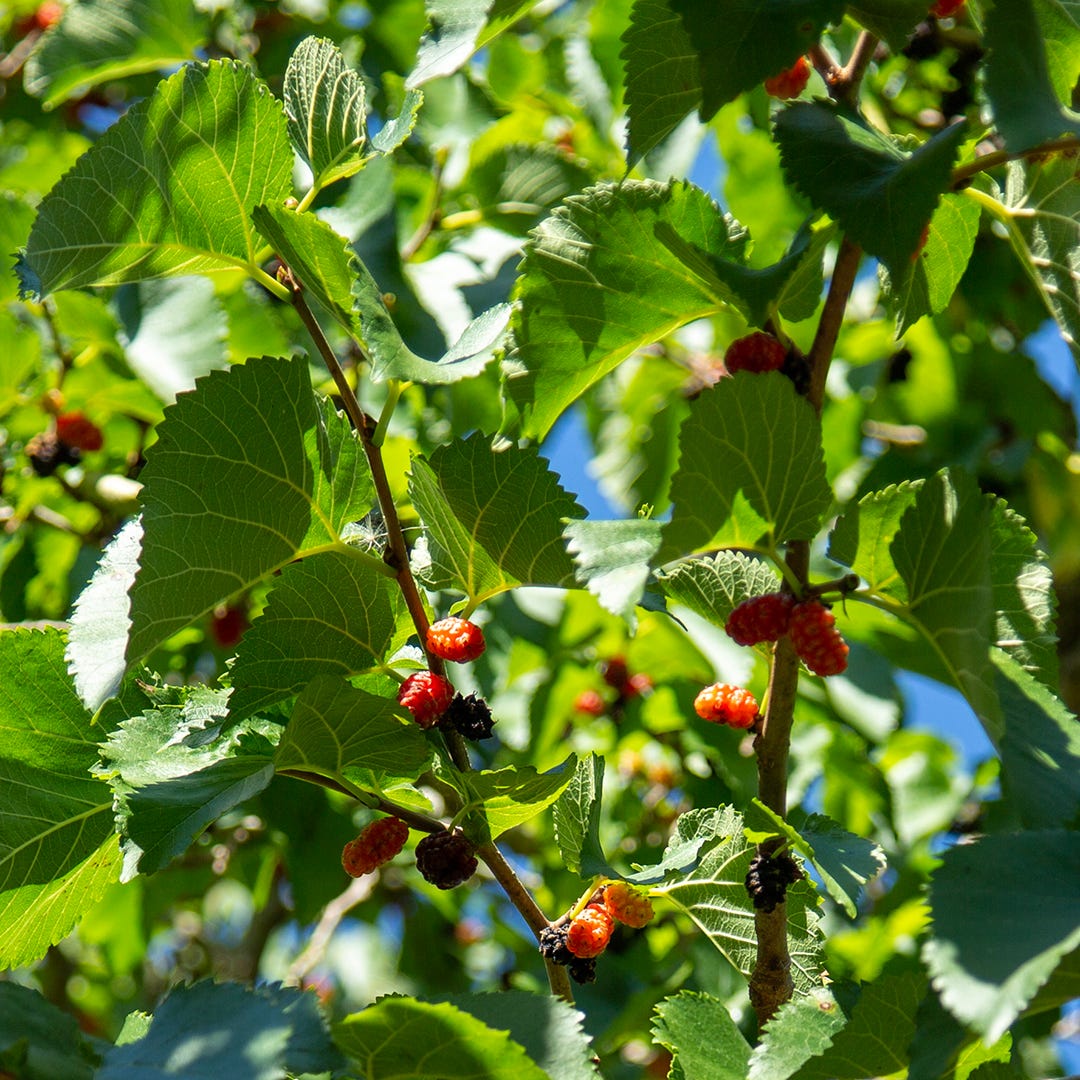28. Hogarth's Mulberry
One of the oldest mulberries in England grows close to the thundering A4 in west London
Fortitude is required to navigate the A4 at Chiswick in order to see one of London’s oldest mulberries at Hogarth’s House. When the artist William Hogarth acquired his country house in 1749 the tree, now such a feature of the small garden, was already present. It might be 350 years old, only slightly younger than the Charlton House Mulberry, and is therefore an important natural monument.
Species details
Black Mulberry
Morus nigra
Where to find it
Hogarth’s House, Hogarth Lane, Great West Road, London W4 2QN
///acute.humble.power | 51.487023, -0.255262
Black mulberry notes
There is a much repeated story that black mulberries were first introduced to Britain in the early seventeenth century when King James imported them in large quantities to start an English silk industry. The story goes that the King was under the misapprehension that it was the leaves of the black mulberry that sustained the caterpillars of Bombyx mori, the silk moth, but it was the leaves of the related white mulberry they preferred and James' error meant English sericulture never took off.
There are many things about this story that don’t entirely stack up: silkworms will eat black mulberry leaves, although white mulberry is easier to harvest. White mulberries were mentioned by Gerard in 1597, so it was a species known in Britain before James lighted on the idea of an English silk industry, and there are records of tens of thousands of white mulberry plants being imported to England on the King’s orders. So it seems silk making failed for other reasons, there is some speculation that the hatching of silkworks could not be made to coincide with the leafing of white mulberry, or that the trees succumbed to frosts in particularly cold winters of the time. Recent archaeological evidence points to black mulberries being known to Romans in Britain more than 1,000 years before James, so the idea that they only arrived here in the 1600s is also very implausible.
Day 3
The urban tree festival is in full swing and continues until Sunday 21st May. Check out the programme here.
Today’s highlights include a Mulberry event, an online presentation about tech enabling tree planting in south London, and an artists’ talk about Epping Forest:
11:00: Mulberry Half Marathon The first of three mulberry walks with mulberry expert Peter Coles. Booking is essential
1:00: Webinar - Grow Back Together From vacant pits to adopted trees, a case study for engaging residents in street tree care. Free, donations welcome, booking essential
6:00: Epping Forest Talks Feral Forest - experiences, space & storytelling. Booking essential
Throughout the Urban Tree Festival. I’ll be posting a Daily Urban Tree which will reflect emerging themes, the places where the Festival is happening and events that are taking place.








Nice! How does this compare to the fabulous Mulberry found in the Grange Gardens, Lewes?